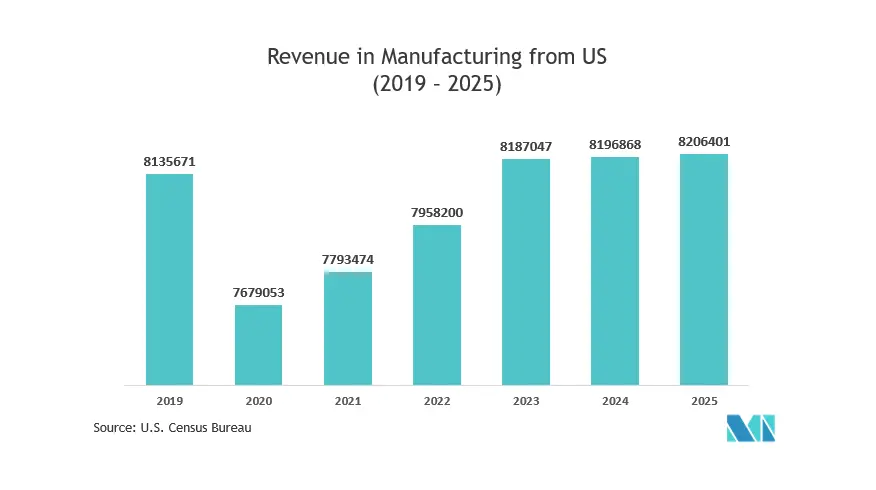Market Trends of US Electrical Enclosures Industry
This section covers the major market trends shaping the US Electrical Enclosures Market according to our research experts:
Commercial spaces and buildings industry to drive the market demand
- It is typical for space to be dedicated to electrical panels and equipment in a commercial building. Often, commercial buildings will have a leading electrical service room and smaller electrical rooms on the other floors. The National Electrical Code requires “clear space,” referred to as working space around panelboard, to ensure easy access to overcurrent devices and provide adequate space for maintenance and inspection. The working space will vary as a function of the voltage of the electrical equipment and the surrounding equipment and walls.
- According to US Census Bureau, the value of public construction spending on commercial projects in the United States between 2008 and 2020 varied over time. In 2019, the public sector spent approximately USD 4.3 billion on commercial construction projects. This number had dropped to around USD 3.83 billion by the following year. Currently, private offices, warehouses, and retail/shopping take the primary lead. However, the building construction is moving toward the smart building, which is expected to increase the commercial projects.
- As protection requirements are less severe, a commercial-grade enclosure might be suitable. NEMA 1 is designed for indoor use and protects against incidental contact and dirt. For instance, Hammond Electronics Limited, which supply its enclosure in the United States, has a full NEMA 3R line and is ideal for many outdoor applications.
- Additionally, according to the US Department of Energy (DOE), HVAC, lighting alone consume about 50% of energy use in the average commercial building. Incorporating smart building automation systems, lighting, and HVAC solutions can decrease energy costs between 30% and 50%. According to the United States Energy Information Administration, commercial buildings account for nearly 20% of United States energy consumption and 12% of greenhouse gas emissions. By reducing waste and conserving energy, smart buildings create benefits for the global community. With increasing smart buildings, the market is expected to cater to significant demand.

Industrial segment to hold the highest market share
- Machine and wiring are protected from direct contact with humans and other external bodies, which could otherwise result in an accident or harm human life or the machine. These cabinets must be built according to industry standards to offer enough strength and safety for vital components installed inside.
- Due to environmental regulations, high capital costs, and the latest certification requirements, panel builders and machine manufacturers who predominantly used their facilities found it difficult to run.
- Many manufacturers use the International Electrotechnical Commission (IEC), which establishes a family of electrical enclosure standards, and the Institute of Electrical and Electronics Engineers (IEEE), a technical professional organization that establishes standards to advance technology and benefit humanity. When choosing an enclosure for industrial applications, factors such as material, protection, mounting, climate control, size, modularity, and versatility are considered.
- The National Electrical Manufacturers Association (NEMA) employs a standard rating system to specify the types of settings in which an electrical enclosure can be utilized. It is widely used to indicate a fixed enclosure's ability to tolerate specific environmental conditions.
- NEMA believes that using standards benefits both the user and the manufacturer. It increases the manufacturer-purchaser relationship's safety, economics, and communication. A NEMA standard describes a product in terms of its characteristics and capabilities.


